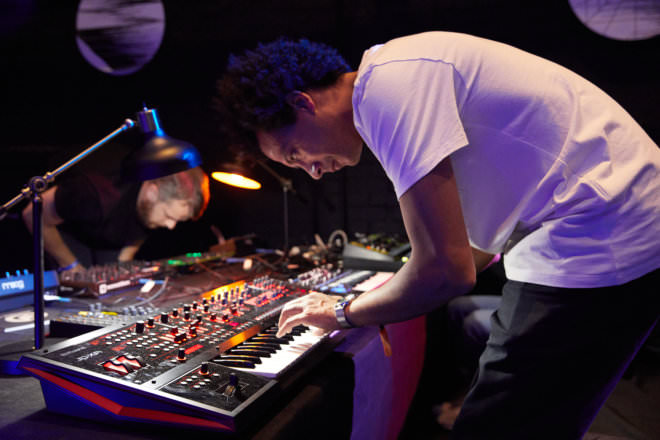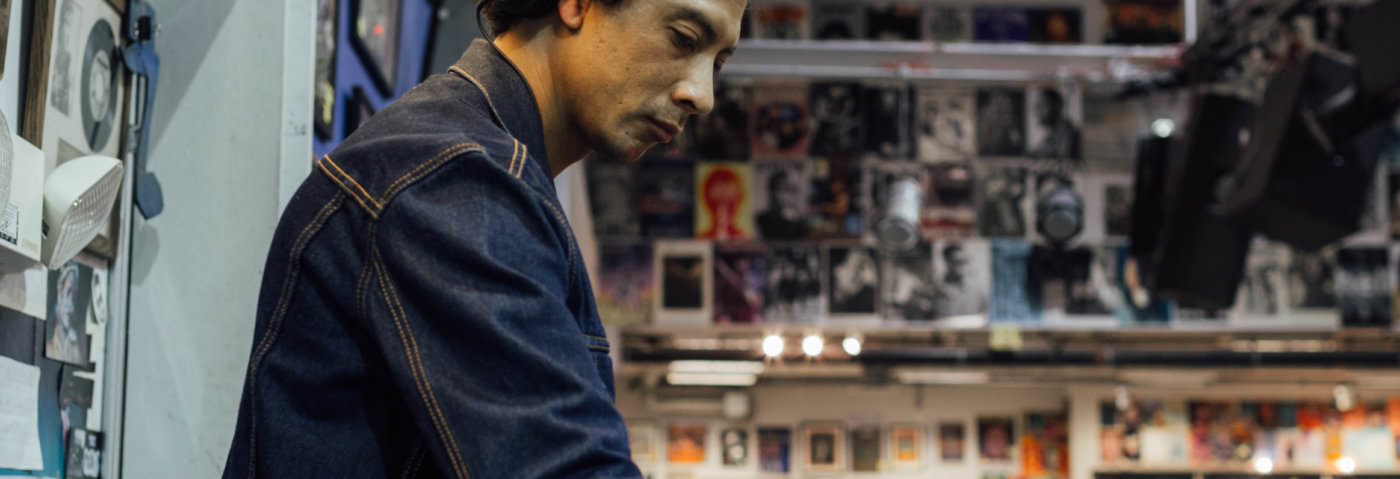Oliver Payne speaks with Esa about his next chapter, the beauty of collaboration and how his past is shaping his future.
Esa, Brixton’s new Phonox resident, Worldwide FM regular, Auntie Flo collaborator and Ata Kak band leader, sees the future. He’s over the past and ready for what is to come. His music, his creativity, draws continually on what he describes as “energies”, these dancefloor attitudes he has amassed from moving place to place, and they’re coming together to bring something organic to the club.
For Esa, he’s been doing this since he moved from Cape Town 15 years ago and the Phonox residency sees him retreating from the studio and embracing the DJ persona full-time. Our conversation begins with production and how so far he’s been using South Africa’s inspiration to shape the forward-thinking music he makes, and how he’ll bring that combination to the dance-floor.
“I think the futuristic element is really coming from my experience of working with indigenous sounds.” His knack for combining the native South African sounds with current UK trends (noticeable on the edit of Que Beleza by Tim Maia, for example) is widely admired. Contemporary electronic basslines, bleeps and whistles – made via machines from whom he has built up friendships with: the likes of London Modular, Pioneer, Yamaha and Make Noise – introduce instruments that are perhaps alien to house music. Esa boldly brings indigenous sounds to the fore, establishing something entirely new.
His unique production approach inspires both contemporaries and aspiring producers. Re-engaging with his past experience of hosting music production workshops in Kenya, he recently shared his in-depth techniques at Ableton’s Loop summit in LA. With this listening session, Esa talked through tracks of his choice, while a 90-minute studio session was an insight into his creative process. A further studio session, entitled ‘Rhythm Moves’, focused on using samples of instruments from Africa to create polyrhythms and how a contemporary workflow, usually used in dance music, can be applied when using indigenous instruments. These techniques all feature prominently on his edit of Que Beleza.
It was that optimism of young people coming together working collaboratively and creating a sound that would push them forward to the future.
“When you talk about African music our minds automatically come away from the ‘norm’,” he says. “I’m able to tap into that, but also to get influences from my time in Europe and my time spent here [London]. I’m bringing these worlds together and in the exact same way I like to take people on a musical journey.” Influences he draws on including the genre ‘Kwaito’. “Kwaito was… looking forward,” Esa says, explaining that the South-African genre, formed in the 90s, was a response to the country’s ‘intense’ history,
“It was that optimism of young people coming together working collaboratively and creating a sound that would push them forward to the future,” Esa says. “Despite the struggles that they went through they created music that would push them forward: to unite them, to bring them together. And I think I’m taking inspiration and influence from all these things and trying to put it together through music, through different energies, through creating new sounds.”

Esa performing at Ableton’s Loop in LA, November 2018. Photo by Anna Elledge.
It seems then that for Esa, who is strict when it comes to the importance of collaboration, the sound of the future is not just created through merging the old with the present, but also through working with others. “I’ve realised that working in collaboration, when it works – because sometimes it doesn’t work – is important. You’re always pushing the boundaries. Two minds is always better than one when trying to create something. That’s pushing forward.” This idea will be brought into Phonox over the coming years, bringing in DJs and letting styles collide on the night.
Esa’s own initial influences are surprisingly local. “A lot of my early records that I produced were pretty much inspired by Detroit techno and house. I spent 10 years in Scotland and 8 in Glasgow and that is what I was exposed to every weekend. Glasgow will always play a massive role for me musically as a DJ, and now I kind of share that,” he laughs, reminiscing about the relentless rave energy Glasgow has. Scotland has techno heritage and he’s taken a bit of this with him.
“It’s okay to give people what they want,” he says, referencing the dancefloor’s thoughtless ‘fist-pumping’ energy. “It’s great, but I think that is sometimes not the main focus. I’m introducing new ideas and new sounds. When I make people think, they go ‘wow, what was that?’ Maybe they Shazam it. Maybe they find it, maybe they don’t. It just opens it up a whole new world.”
Two minds is always better than one when trying to create something.
However, Esa’s own future and the next step in his own life is the main focus. “It’s important to focus on ourselves and through this I think I’m paying more attention to me and my health
Previous resident HAAi, recently nominated for BBC Essential Mix of the Year, left “some amazing energy in that room,” he says. “I guess now it’s just to piece it together in my way. Big boots to fill, as someone has told me. Every Saturday I go in there and give you a performance. A show. I’m going to create a sound that you can take away with you, if you want.”
Photography by Anna Elledge & Michael Walsh
